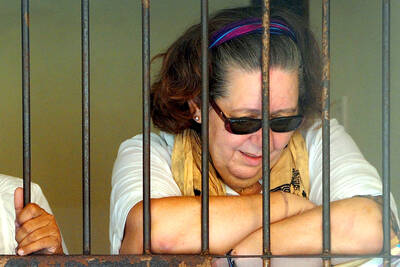A global slime-making craze sparked by social media has prompted safety concerns over the use of the cleaning product borax.
Also known as sodium borate, borax has a range of household uses including as an insecticide, a stain remover and a deodorizer. It is also a pivotal ingredient of home-made slime, a perennial art or science project in which it is mixed with water, glue and food coloring.
Slime has recently undergone a global resurgence, with Google searches climbing steadily in the past 12 months and accelerating this year.
In February, Elmer’s Glue said an increase in sales in the US in the second half of last year were “due in large part to slime mania” and, in March, the Today show reported that schools around the US had banned slime for being “too distracting” and messy.
Borax, a naturally occurring mineral, is also a mild irritant and there have been concerns over children’s safety following reports of it inducing burns.
An 11-year-old girl in Rockland, Massachusetts, suffered second and third-degree burns to her hands that were attributed to prolonged exposure to borax after making slime every day for several months.
“I love it, a lot,” the girl told local news media of slime in March. “Don’t make it, don’t play with it.”
In February, a Manchester, England, woman posted photographss of chemical burns on her daughter’s hands on Facebook as a warning to other parents. It was shared 820 times.
“My little Queen has been making slime off YouTube ... 3 weeks later we are looking at plastic surgery on her hands from a burns department at Hospital,” she wrote.
According to the non-profit, non-partisan Environmental Working Group in the US, borax can have short and long-term health effects, with irritation possible following skin or eye contact, inhalation or ingestion.
In the long term, it may disrupt hormones and harm the male reproductive system, with chronic exposure to high doses of borax linked to a greater risk of decreased sperm count and libido.
Kate Copping of Melbourne told Guardian Australia that her 10-year-old daughter, Daisy, started making slime about six months ago after having come across it on YouTube.
“She has been making it nonstop. We are going to buy glue constantly,” Copping said.
Copping said borax was “kind of like a poison,” but said nothing had worked so well to produce high-quality slime.
Copping said the craze was popular among Daisy’s school friends, but she realized it was a worldwide phenomenon only after she vented her frustration with the messy fad on Facebook.
“I’ve got a friend in Scotland who’s like ‘I’m so sick of it, friends in the US saying the same thing — it’s going crazy everywhere,” she said. “I’ve heard at some schools, kids are making it and selling it in the playground.”
The craze has been facilitated by social media, with 4.2 million results for “slime tutorial” on YouTube. One video has been viewed 10.1 million times since it was posted on YouTube on March 4.
There are 2.8 million posts hashtagged #slime on Instagram, and several dedicated accounts — @slimequeeens’ “kinda satisfying slime videos” have been followed by 864,000 people since its first post in June last year. It also sells slime through an online marketplace.
A 15-year-old slime creator followed by 524,000 people told New York Magazine’s “Select All in April” that she spent more than 20 hours a week making slime, in between school and homework: “The only reason I sell slime is so I can make more slime.”
Creative spins on the original recipe of borax and glue, achieving different effects, textures and consistencies — such as “MAGICAL UNICORN SLIME” with glitter or “Kawaii Coffee Slime with REAL Coffee” — abound online.
However, most experimentation in the online slime community has been with a view to perfecting the holy grail: borax-free slime.
Alternative recipes that do not contain borax, using contact lens solution, hand sanitizer, liquid starch, shaving foam and even butter, have been widely shared online.
However, Kyran Quinlan, a physician and chairman of the American Academy of Pediatrics’ Council on Injury, Violence and Poison Prevention, told Good Housekeeping that borax was “generally safe.”
The craze had reached his own family, he said.
“I love that kids are having fun with slime... We have some newly made slime at the house now, thanks to one of the kid,” he said.

Indonesia was to sign an agreement to repatriate two British nationals, including a grandmother languishing on death row for drug-related crimes, an Indonesian government source said yesterday. “The practical arrangement will be signed today. The transfer will be done immediately after the technical side of the transfer is agreed,” the source said, identifying Lindsay Sandiford and 35-year-old Shahab Shahabadi as the people being transferred. Sandiford, a grandmother, was sentenced to death on the island of Bali in 2013 after she was convicted of trafficking drugs. Customs officers found cocaine worth an estimated US$2.14 million hidden in a false bottom in Sandiford’s suitcase when

CAUSE UNKNOWN: Weather and runway conditions were suitable for flight operations at the time of the accident, and no distress signal was sent, authorities said A cargo aircraft skidded off the runway into the sea at Hong Kong International Airport early yesterday, killing two ground crew in a patrol car, in one of the worst accidents in the airport’s 27-year history. The incident occurred at about 3:50am, when the plane is suspected to have lost control upon landing, veering off the runway and crashing through a fence, the Airport Authority Hong Kong said. The jet hit a security patrol car on the perimeter road outside the runway zone, which then fell into the water, it said in a statement. The four crew members on the plane, which

POWER ABUSE WORRY: Some people warned that the broad language of the treaty could lead to overreach by authorities and enable the repression of government critics Countries signed their first UN treaty targeting cybercrime in Hanoi yesterday, despite opposition from an unlikely band of tech companies and rights groups warning of expanded state surveillance. The new global legal framework aims to bolster international cooperation to fight digital crimes, from child pornography to transnational cyberscams and money laundering. More than 60 countries signed the declaration, which means it would go into force once ratified by those states. UN Secretary-General Antonio Guterres described the signing as an “important milestone,” and that it was “only the beginning.” “Every day, sophisticated scams destroy families, steal migrants and drain billions of dollars from our economy...

Japan’s ruling Liberal Democratic Party (LDP) and its junior partner yesterday signed a coalition deal, paving the way for Sanae Takaichi to become the nation’s first female prime minister. The 11th-hour agreement with the Japan Innovation Party (JIP) came just a day before the lower house was due to vote on Takaichi’s appointment as the fifth prime minister in as many years. If she wins, she will take office the same day. “I’m very much looking forward to working with you on efforts to make Japan’s economy stronger, and to reshape Japan as a country that can be responsible for future generations,”